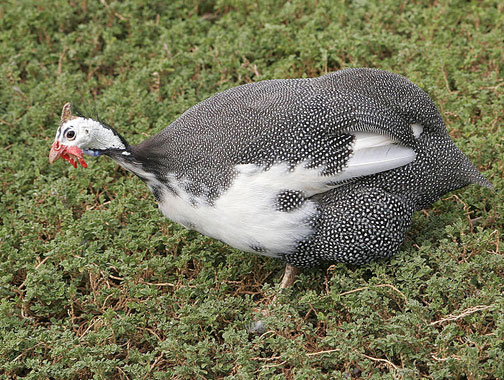
They’re not pretty, they’re not useful, and they outnumber us.
I like to consider myself tolerant of other living things, even those I find a bit unpleasant, like houseflies and pomeranians, but there are limits to my generosity. Ticks fall somewhere on the far side of those limits.
Ticks are arachnids, related to mites (and very distantly to my friends, the spiders). There are actually three distinct families of ticks, but only one, the “hard ticks” or Ixodidae (from a Greek word meaning “sticky”), feed on humans and their animals.
Ticks live all over the world, but, like characters from a Stephenie Meyer novel, they have certain important requirements that must be met in order for them to thrive: they need humidity, they need warmth, and red blood is their only food. Deserts and tundras harbor few ticks: temperate forests and fields are full of them. I do not happen to live in a desert or a tundra, so I keep a jar of alcohol and a pair of tweezers on my front porch from March until November for tick removal and disposal.
A female tick, gorged on blood, lays thousands of eggs on the ground, which hatch into tiny larvae, called “seed ticks”. The seed ticks attach themselves to birds, mice or other small, warm-blooded animals, where they feed, blowing up like balloons in the process, then drop off onto the ground to molt into “nymphs”, an intermediate stage. The nymphs then find new hosts, fill up on blood once more, drop off, and molt again, this time into full-grown adults. The adult ticks climb up into bushes or onto weeds and tall grass where they can reach larger, juicier hosts, such as deer, cattle, or careless hikers.
The adults mate, the females feed, drop off onto the ground, and lay their eggs, starting the process all over again. The entire cycle takes about a year.
Back in 2001 a 90 million-year-old tick was recovered from a block of amber; before becoming a paleontologist’s paperweight, the ancient tick and its relatives probably fed on the blood of dinosaurs. Triceratops and pterodactyls didn’t survive, but the ticks did. Go figure.
There is a long list of diseases that ticks carry and can transmit to their hosts. Unlike mosquitoes, ticks don’t have to bite an infected host to pick up a disease to pass along to the next victim: tick eggs can become infected while still in the mother’s ovaries, so that the young are born with an array of pathogens already in their systems. Tick-borne disease range from the well-known Lyme disease and spotted fever to more obscure illnesses such as an allergy to red meat severe enough to cause anaphylactic shock in the unsuspecting victim hours after eating a burger, six months after being bitten.

They may be dumb as rocks, and they look like something pooped on their heads, but they eat ticks. Lots of ticks.
What to do? Not much. The insecticides that work best against ticks also tend to poison humans. There are parasitic wasps that attack ticks, but they can only account for so many. The most aggressive predator on ticks is said to be the guinea hen, which will eat thousands of ticks in the course of a summer. Protective clothing helps, especially light, solid colors that make the ticks easy to spot and brush off. It’s also a good idea to be careful when moving around in places where deer or cattle travel: don’t brush up against tall weeds or shrubs where adult ticks might be lurking. Before you get home, check your clothes.
Around the house, mow your grass and trim bushes so that they aren’t touching the walls. Keep your cats indoors, and treat all your pets with a quality flea and tick product throughout the summer and fall.
If you’ve been bitten, you need to remove the creature carefully: don’t just go nuts and start yanking. Get some tweezers and try to grab the head as close to where it meets your skin as possible, and then pull it out carefully. If you’re too rough you may tear the tick’s body away leaving the sucking mouthparts embedded in your skin, where they can cause infection. Rub the bite with a little alcohol or other disinfectant, and then drop the tick into a jar of alcohol (my grandmother used gasoline, but she was like that.)
*
None of this information is likely to be new to anyone who lives in areas where ticks are a problem, but I’m feeling particularly vindictive toward the little beggars at the moment, having been bitten in just the last day or two. I figure if even one tick goes hungry because somebody reads this and takes heed, I’ll have had my revenge.
* * *
Leave a Reply